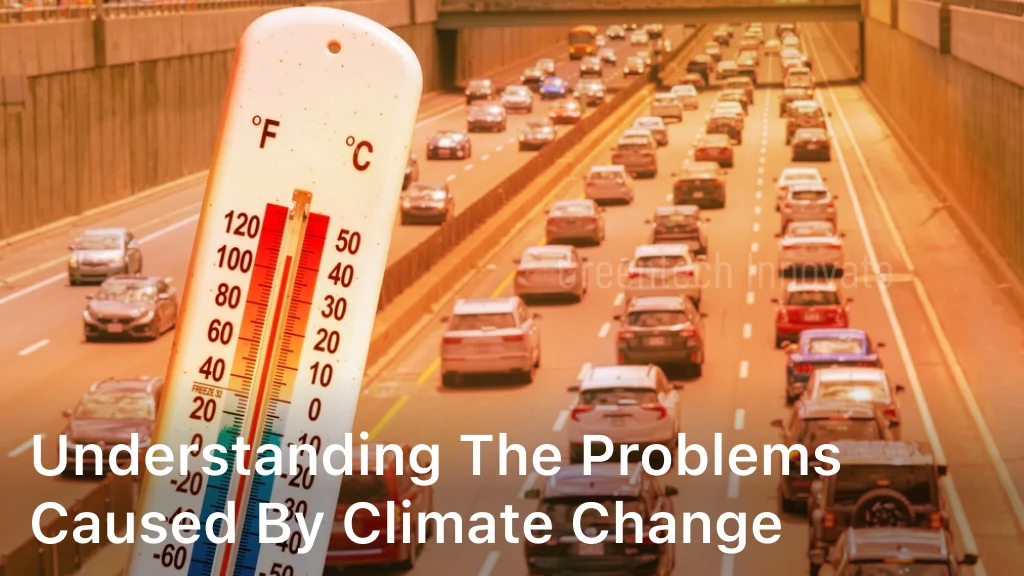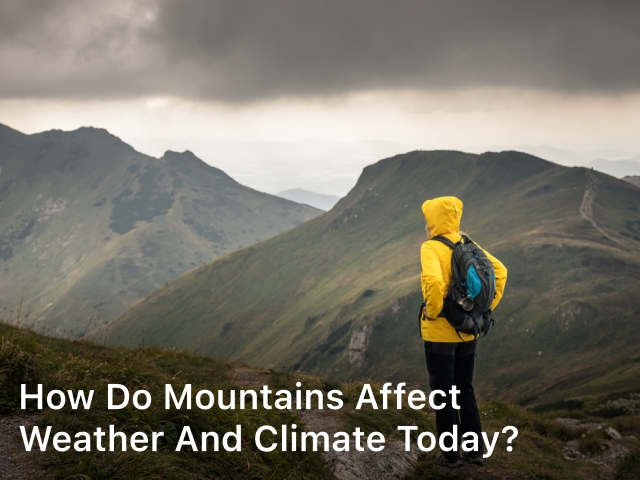
greentechinnovate.com. Are Fire Tornado Real and Dangerous for Humans? Discover if a fire tornado is real and dangerous. Our expert analysis breaks down this rare phenomenon’s potential risk to human safety.
Fire tornadoes, also known as fire whirls or firenados, are rare but devastating weather phenomena that have been making headlines in recent years.
These swirling masses of flames and smoke can reach heights of over 1,000 feet and generate winds exceeding 100 miles per hour, posing a serious threat to nearby communities and wildlife.
But how real and dangerous are fire tornadoes for humans? In this article, we will explore the reality and potential risks of fire tornadoes and examine the measures that can be taken to mitigate their effects.
Key Takeaways
- Fire tornadoes are rare but dangerous weather phenomena that can pose a serious threat to nearby communities and wildlife.
- These swirling masses of flames and smoke can reach heights of over 1,000 feet and generate winds exceeding 100 miles per hour, causing extreme heat and hazards from inhaling smoke and other hazardous substances.
- Emergency preparedness, evacuation procedures, and early detection and warning systems are crucial for human safety when faced with the threat of fire tornadoes.
- Strategies such as fuel management, fire-resistant construction, and effective firefighting teams can help mitigate the risks of fire tornadoes and prevent their occurrence.
- Understanding the nature of fire tornadoes and taking appropriate safety measures can help protect human life and property in the face of this rare but potentially hazardous weather phenomenon.
Understanding Fire Tornadoes
Fire tornadoes, also known as fire whirls, fire devils, or firenadoes, are a rare meteorological phenomenon that occurs when a rotating column of fire forms from intense heat and turbulent winds. They can reach heights of over 100 feet and can have winds of up to 140 mph.
Fire tornadoes are most commonly formed during wildfires, particularly in areas with steep terrain, strong winds, and dry air. Factors that contribute to their development include the size of the fire, the angle of the wind, and the temperature gradient between the ground and the air.
While fire tornadoes are not a common occurrence, there have been several notable incidents in recent history. In 2018, a fire tornado in Northern California reached wind speeds of up to 143 mph, making it the strongest tornado in California’s history.
Are Fire Tornado Real and Dangerous?
A fire tornado is a large, rotating column of air that is filled with smoke and debris from a fire. Fire tornadoes can occur during wildfires and are often caused by the intense heat of the fire.
While fire tornadoes are not common, they can be extremely dangerous for humans. Fire tornadoes can reach wind speeds of up to 150 miles per hour and can cause the debris to be thrown long distances. In addition, the intense heat of the fire tornado can cause burns and respiratory problems.
If you find yourself in the path of a fire tornado, it is important to take cover immediately. Seek shelter in a nearby building or vehicle. If you are caught outside, try to find a ditch or low-lying area to take cover in. Protect your head and face from the heat and flying debris.
Despite their dangers, fire tornadoes are an amazing sight. The intense heat of the fire creates a powerful updraft that can lift smoke and debris high into the air. The column of air can be up to a mile wide and several miles tall. The rotating column of air often creates a funnel cloud that can be seen for miles.
So, are fire tornado real and dangerous for humans? Yes, fire tornadoes are real and dangerous. Real phenomenon and they can be very dangerous for humans. If you find yourself in the path of a fire tornado, take cover immediately and stay safe.

Characteristics of Fire Tornadoes
Fire tornadoes have several unique characteristics that distinguish them from other types of tornadoes. They are typically shorter in duration, lasting only a few minutes, and their paths are often erratic and unpredictable. The flames themselves can also be a variety of colors, including white, blue, and even purple.
Another distinguishing factor is that fire tornadoes often occur during the later stages of a wildfire, when the fire has consumed much of the ground-level fuel. This lack of fuel at the surface creates a vacuum that draws in air, causing the fire to rise and rotate.
Notable Fire Tornado Incidents
| Year | Location | Deaths |
|---|---|---|
| 2018 | Redding, California | 0 |
| 2016 | Alberta, Canada | 2 |
| 1923 | Tokyo, Japan | 38 |
As previously mentioned, one of the most notable fire tornado incidents occurred in Northern California in 2018. However, there have been several other incidents throughout history that have resulted in injuries and fatalities.
In 2016, a fire tornado in Alberta, Canada, caused two fatalities and destroyed several homes. In 1923, a massive fire tornado swept through Tokyo, Japan, killing 38 people and injuring over 1000.
These incidents serve as a reminder of the potential danger that fire tornadoes can pose to human safety.
Assessing the Risks to Human Safety
Fire tornadoes are rare weather phenomena that can pose significant risks to human safety. The extreme heat and strong winds they generate can cause physical harm, while inhaling smoke and other hazardous substances can lead to respiratory problems and other health issues.
Physical Threats
Fire tornadoes can produce temperatures that reach up to 2,000 degrees Fahrenheit, making them hot enough to melt metal. In addition, the strong winds generated by these phenomena can knock over trees, power lines, and other structures, causing injuries and fatalities. Flying debris can also pose a significant threat, as it can cause serious damage to homes and other buildings.
Health Risks
Inhaling smoke and other hazardous substances can lead to respiratory problems, eye irritation, and other health issues. The presence of chemicals such as benzene, toluene, and hydrogen cyanide can make the situation even more dangerous, as exposure to these substances can cause serious health problems and even death in some cases.
Impact on Communities
Fire tornadoes can have a devastating impact on communities, as they can destroy homes, businesses, and other structures, leading to significant economic losses. In addition, the psychological impact of these events can be significant, as they can cause emotional trauma and stress for those affected.
Emergency Preparedness
Given the potential risks associated with fire tornadoes, it is essential that communities have emergency preparedness plans in place. This includes developing evacuation procedures and early detection and warning systems, as well as training first responders and other community members on how to respond to these events.
Protective Measures
There are a variety of protective measures that can be taken to minimize the risks associated with fire tornadoes. For example, choosing fire-resistant construction materials for homes and other buildings can help prevent them from being destroyed in the event of a fire tornado. Similarly, fuel management strategies can be employed to reduce the risk of fires spreading and becoming more severe.
Human Response and Safety Measures
Given the potential danger that fire tornadoes pose to human safety, it’s essential to know how to respond quickly and effectively when they occur. While it may be impossible to completely prevent their formation, there are several safety measures that can be taken to minimize harm.
Emergency Preparedness
One of the most important safety measures is emergency preparedness. This involves developing and practicing an emergency plan with household members, including identifying escape routes and meeting places in case of evacuation.
It’s also important to have emergency supplies, such as a first aid kit, non-perishable food, water, and a battery-powered or hand-crank radio, readily available in case of power outages or other disruptions.
Evacuation Procedures
In case of a fire tornado, it’s crucial to evacuate the area immediately. If there is sufficient warning, follow an established evacuation plan and head to a safe location, such as a designated shelter or a location outside of the danger zone. If there is no established plan, evacuate the area in the direction away from the fire and seek shelter in a safe place.
Early Detection and Warning Systems
Early detection and warning systems can also play a critical role in ensuring human safety. This includes monitoring weather reports and having alert systems in place for early warning of potential fire tornadoes.
Communities can also invest in fire detection systems, such as cameras and sensors, to detect early signs of fires and alert emergency responders.
“It’s essential to know how to respond quickly and effectively when fire tornadoes occur.”
Fire Tornado Mitigation and Prevention
While fire tornadoes are rare phenomena, their potential danger to human safety cannot be underestimated. Therefore, mitigation and prevention strategies play a crucial role in protecting individuals and communities from the risks posed by these events.
Fuel Management
One of the most effective ways to prevent fire tornadoes is through fuel management. This involves reducing the amount of dry, combustible material in areas where fires are likely to occur. This can be achieved through various methods, including controlled burns, mechanical thinning, and prescribed fire.
| Method | Description |
|---|---|
| Controlled burns | This is a planned fire that is intentionally set to reduce fuels and prevent the spread of wildfires. |
| Mechanical thinning | This involves the use of equipment to remove excess vegetation and reduce fuel loads. |
| Prescribed fire | This is a controlled fire that is used to reduce fuels and improve overall forest health. |
By reducing the amount of fuel available, the likelihood of fires, and ultimately fire tornadoes, can be decreased.
Fire-Resistant Construction
Another effective strategy for mitigating the risks of fire tornadoes is through fire-resistant construction. This involves using materials and designs that can withstand extreme heat and prevent the spread of fires.
According to the National Fire Protection Association, fire-resistant construction includes “noncombustible materials, fire retardant-treated wood, and other materials that can withstand high temperatures.”
Building codes in wildfire-prone areas often require homes to be constructed with fire-resistant materials and incorporate features such as fire-resistant roofs, vents, and windows to help prevent fire spread. This can significantly reduce the risk of damage and loss of life in the event of a fire tornado.
Role of Firefighting Teams
In addition to fuel management and fire-resistant construction, firefighting teams play a critical role in mitigating the risks posed by fire tornadoes.
Rapid response and suppression can help prevent small fires from growing into larger, more dangerous fires that can potentially develop into fire tornadoes.
Local and regional firefighting agencies should be equipped with the appropriate training, personnel, and equipment to quickly and effectively respond to wildfires and other fire-related incidents.
Early detection and warning systems also play a vital role in allowing firefighting teams and communities to prepare for and respond to fire tornadoes.
Mitigating the risks of fire tornadoes requires a multifaceted approach that involves fuel management, fire-resistant construction, and rapid response from firefighting teams.
By understanding the potential dangers posed by these rare weather phenomena and implementing effective prevention and mitigation strategies, individuals and communities can work to stay safe in the face of these potentially catastrophic events.
Conclusion
Fire tornadoes are a real and rare weather phenomenon that can potentially pose a danger to human safety. Understanding their formation, characteristics, and potential risks is crucial in preparing for and responding to their occurrence.
When it comes to human response, early detection and warning systems can be vital in providing enough time for evacuation procedures to be implemented.
Emergency preparedness and evacuation plans are also critical in preventing harm to human lives. In addition, proper training of firefighting teams can ensure they are prepared to tackle such a rare occurrence effectively.
Preventive measures can also play a significant role in minimizing the risks of fire tornadoes. Fuel management can reduce the likelihood of fires starting, while fire-resistant construction can help prevent the spread of fires. Properly equipped firefighting teams can also help prevent and extinguish fires before they turn into fire tornadoes.
In conclusion, while fire tornadoes are rare, they are a potentially dangerous weather phenomenon that can pose a threat to human safety. It is essential to understand their formation, potential risks, and appropriate response and preventive measures to reduce harm and ensure human safety.
FAQ
Are fire tornado real and dangerous for humans?
Yes, fire tornadoes are real and can pose a significant danger to humans. These rare meteorological events combine the destructive forces of a tornado with the intensity of a fire, creating a whirlwind of flames and smoke.
What are fire tornadoes?
Fire tornadoes, also known as fire whirls or firenadoes, are rotating columns of fire that form during severe wildfires or volcanic eruptions. They occur when intense heat and strong winds combine, causing flames to spiral upwards and form a tornado-like structure.
How do fire tornadoes form?
Fire tornadoes form when certain atmospheric conditions align during a fire event. Factors such as high temperatures, unstable air masses, and wind patterns can contribute to the development of a fire tornado. The heat from the fire creates updrafts, which, when combined with the wind, can create a spinning motion within the flames.
What are the risks to human safety posed by fire tornadoes?
Fire tornadoes pose several risks to human safety. The extreme heat and strong winds generated by these phenomena can cause severe burns, create flying debris, and make it difficult for individuals to escape. In addition, the smoke and toxic gases emitted by the fire can be hazardous to inhale and can further endanger human health.
How can humans respond to the threat of fire tornadoes?
In the face of a fire tornado, it is crucial for individuals to prioritize their safety. This may involve following evacuation procedures, seeking shelter in fire-resistant structures, and heeding warnings issued by authorities. Early detection systems and emergency preparedness plans can also help minimize the risks associated with fire tornadoes.
What measures can be taken to mitigate the risks of fire tornadoes?
Mitigating the risks of fire tornadoes involves a combination of preventive measures and swift response strategies. These may include implementing fuel management practices to reduce the availability of combustible materials, constructing buildings with fire-resistant materials, and having well-trained firefighting teams equipped to handle these unique weather phenomena.
Is it possible to prevent fire tornadoes?
While it is not possible to prevent fire tornadoes entirely, measures can be taken to minimize their occurrence and impact. This includes promoting fire safety practices such as proper disposal of flammable materials, raising awareness about the risks of wildfires, and investing in research to better understand the nature of fire tornadoes and develop more effective prevention strategies.
What was the biggest fire tornado in the world?
The most destructive fire tornado in recorded history likely occurred during the 1923 Tokyo fire whirl, which was triggered by massive urban fires that followed an earthquake. This immense whirlwind is believed to have claimed the lives of approximately 38,000 people in under 15 minutes.




